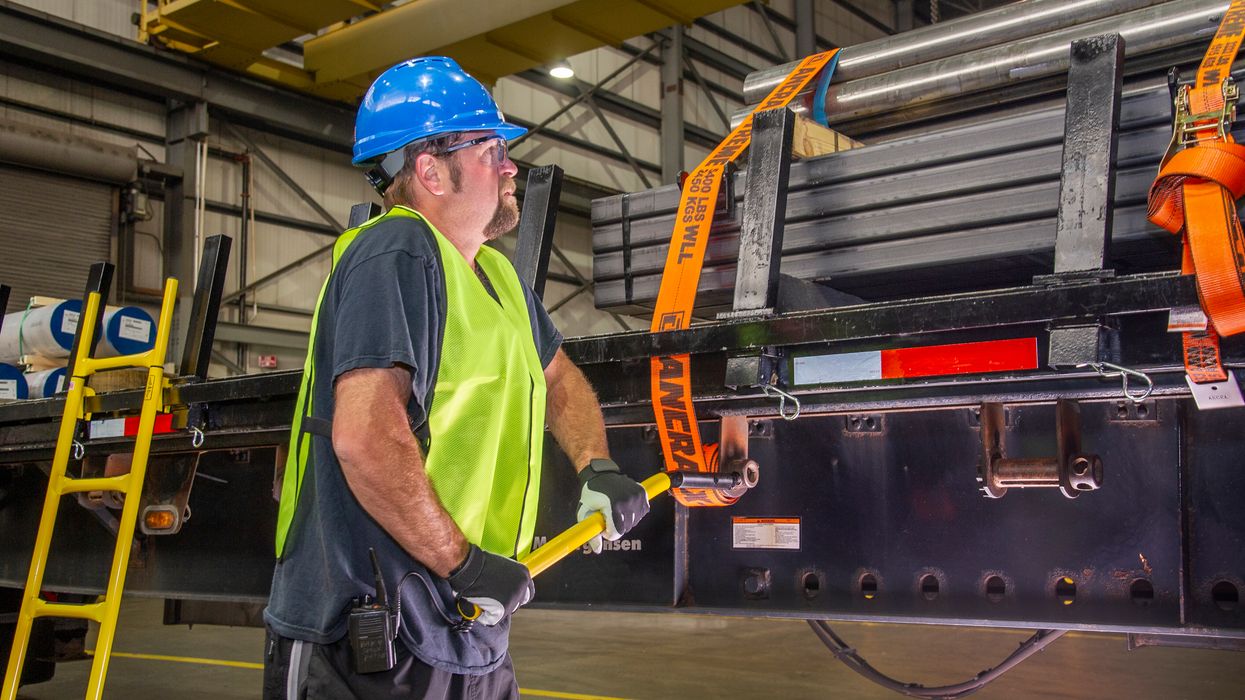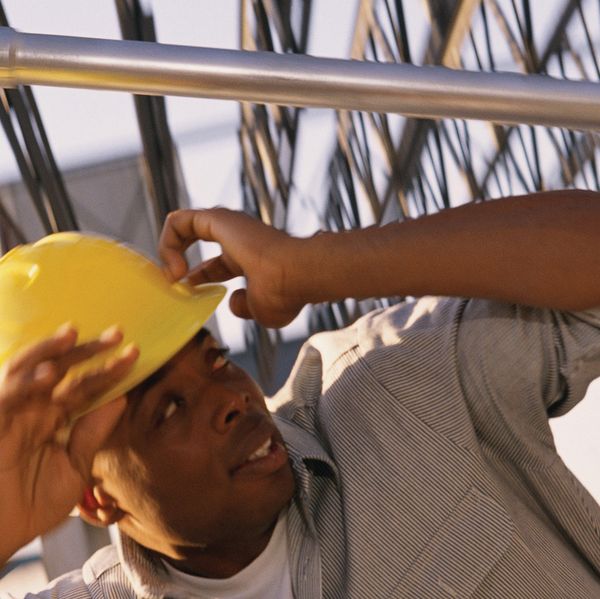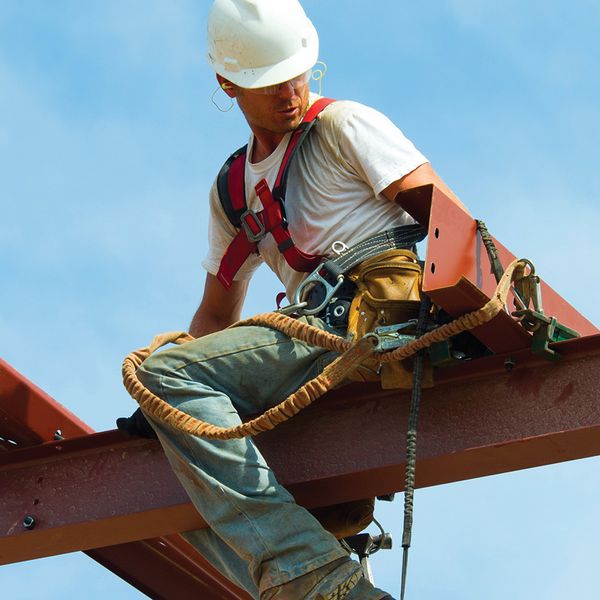Secure materials as though a life depends on it!
Whether your business is general industry or construction, OSHA requires your materials to be secured. But will you be the next company with a fatality from unsecured material anyway? According to the Bureau of Labor Statistics (BLS), in 2020, there were 227 fatalities due to falling objects, representing 48 percent of all “struck by” incidents and 4.5 percent of all workplace fatalities.
It can happen at your company!
In July 2023, a 60-year-old Nebraska worker was killed by a falling stone slab. Police reported that two one-thousand-pound slabs of granite or concrete fell on the worker while stone was being loaded onto a vehicle.
There were eight fatal injuries in the cut stone and cut stone product manufacturing industry in the U.S. in 2021 according to the BLS. One fatality is too many; eight indicates a true need for a focus on material securement!
A similar incident occurred in September 2019 when two employees of a stone warehouse in Michigan were killed almost instantly after multiple slabs of granite fell on them. Each of the slabs weighed over one thousand pounds according to investigators on the scene of the incident.
What do the regulations say?
For general industry, 1910.176(b) requires the storage of material to be such that it doesn’t create a hazard. It requires, “Bags, containers, bundles, etc., stored in tiers shall be stacked, blocked, interlocked and limited in height so that they are stable and secure against sliding or collapse.”
For those in construction, all materials “stored in tiers shall be stacked, racked, blocked, interlocked, or otherwise secured to prevent sliding, falling or collapse” per 1926.250(a)(1).
When there’s falling object exposure, OSHA requires the employer to protect employees from falling objects by implementing one or more of the following:
- 1910.28(c)(1) — Erecting toeboards, screens, or guardrail systems to prevent objects from falling to a lower level;
- 1910.28(c)(2) — Erecting canopy structures and keeping potential falling objects far enough from an edge, hole, or opening to prevent them from falling to a lower level; or
- 1910.28(c)(3) — Barricading the area into which objects could fall, prohibiting employees from entering the barricaded area, and keeping objects far enough from an edge or opening to prevent them from falling to a lower level.
Here are some ways to comply with these requirements:
- Keep non-essential tools and materials at least 3 feet from the leading edge.
- Use netting below scaffolding or other open edges to prevent tools and materials from falling onto workers below.
- Secure tools and objects when working on elevated surfaces.
- Secure loads before lifting and moving them with cranes or lifts.
- Never hoist or pass elevated loads over people.
- Stack materials neatly and securely to avoid tipping or collapsing.
- Use tool lanyards or holsters to prevent tools from falling.
- Avoid handing objects or tools over guardrails.
- Inspect tools, toeboards, PPE, and other essential items for proper condition and placement.
- Remove items (tools, pens, phones, etc.) from all loose or unsealed pockets, especially top shirt pockets.
- Require hard hats and other required personal protective equipment (PPE) for every person in areas at risk for falling objects.
- Barricade or rope off the area where fall or drop hazards may exist.
- Regularly train workers on workplace hazards, falling object protections, and material securement.
Keys to Remember: Even though OSHA requires the employer to protect employees from falling objects, people are dying from falling material. Employers must implement falling object protection such as material and tool securement, netting, PPE, or other appropriate controls.






























































